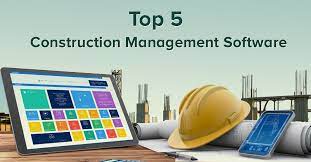As technology is constantly progress, the landscaping of construction software evolves, ushering in new developments and improvements that redefine how tasks are conceptualized, performed, and maintained. Below are a few important developments shaping the way forward for construction software:
Incorporation of Artificial Knowledge (AI) and Unit Discovering (ML):
AI and ML algorithms are increasingly simply being integrated into construction software to improve repeating jobs, enhance source allocation, and provide information-driven information for determination-creating. Examples include:
Predictive statistics for schedule and price range forecasting.
AI-driven threat assessment and mitigation tactics.
Device understanding algorithms for improving developing styles depending on overall performance details.
Adoption of Augmented Fact (AR) and Digital Actuality (VR):
AR and VR technologies are altering the way construction projects are visualized, arranged, and accomplished, providing immersive experiences and improved spatial being familiar with. Programs incorporate:
VR-centered digital walkthroughs for style validation.
AR overlays for on-website construction advice and high quality management.
Remote control partnership employing AR-enhanced movie conferencing tools.
Embrace of Internet of Things (IoT) and Detector Technology:
IoT gadgets and detectors inlaid within construction websites and building elements permit real-time monitoring of diverse factors, increasing protection, effectiveness, and sustainability. These include:
IoT-turned on gear tracking for products management.
Enviromentally friendly sensors for keeping track of air quality and temp.
Clever developing techniques for vitality management and predictive upkeep.
Expansion of Cloud-Based Solutions:
Cloud-centered construction software continues to acquire traction, giving scalability, mobility, and accessibility positive aspects over traditional on-premises options. Important rewards consist of:
Centralized information safe-keeping and accessibility from anywhere, at any time.
Effortless collaboration among spread project crews.
Automatic software changes and servicing, minimizing IT over head.
Give attention to Sustainability and Green Constructing Techniques:
Construction software is increasingly integrating characteristics to assist eco friendly developing techniques, including electricity modeling, lifecycle examination, and material finding optimization. Crucial functionalities include:
Carbon dioxide footprint analysis and decrease tactics.
Incorporation with green building recognition applications.
Supply sequence openness for lasting finding of components.
In conclusion, the way forward for construction software is labeled by creativity, powered by rising technologies and evolving industry calls for. By embracing these trends and utilizing the effectiveness of superior digital resources, construction businesses can navigate challenges and seize possibilities within an ever-changing scenery.
